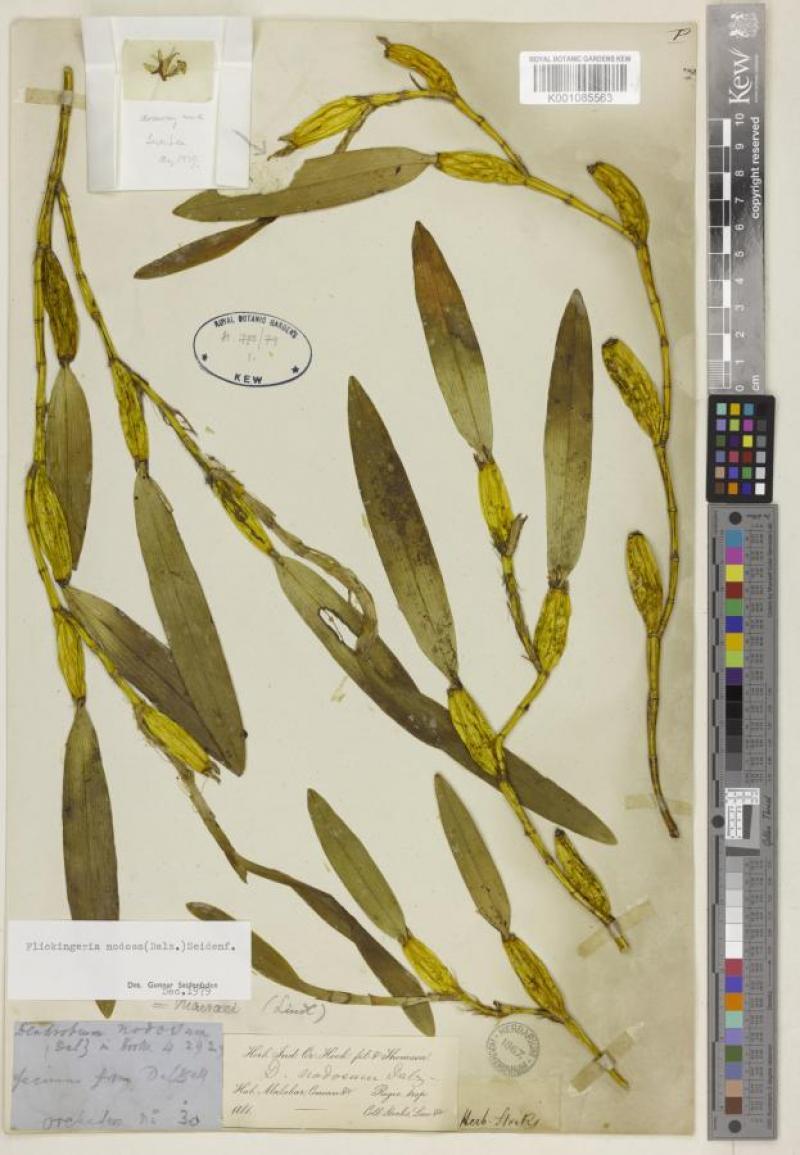Flickingeria macraei
Also known as: Macrae's Flickingeria in the subfamily: Epidendroideae
General Information
Macrae's Flickingeria is a sympodial warm growing orchid belonging to the sub family Epidendroideae. It is named after the English Plant Collectoe in the 19th century.
Plant Description
Sympodial. Grows to 0.35-21cm. Each new growth has a single rigid lance shaped leaf that grows to 2.5-15cm long. Pseudobulbs grow to 4-5.5cm
Substrate(s)
- Coarse
- Medium
- Bark
Climate
These orchids thrive in hot, steamy locations, living in low altitude jungle areas where they often receive heavy sporadic rainfall, warm humid winds, and sunlight filtered year round by the surrounding growth.
They can survive, but will often struggle if the humid, warm conditions are not met - roots will die back and leaves will thin out, spikes and buds can be aborted if conditions change too frequently during flowering. They can tolerate cooler or drier conditions temporarily, but extended exposure will seriously affect them.
They will grow best in the tropics, especially coastal areas where they receive ocean breezes, but can do well in a greenhouse, supplied that the humidity is kept high, temperature is not allowed to skyrocket and extra shade is provided during hot weather.
Grows at low to high elevations. Rainfall ranges from 61mm to 196mm per day, heaviest in November and lightest in February. Temperature ranges from 17C to 30C, highest in April (23C to 30C) and lowest in January (17C to 26C).
Watering
These orchids prefer a constant supply of moisture, with a slight drying out between waterings. Saucers can be placed under pots to retain moisture during hot weather, however the saucers should be removed or let to dry every 1-2 weeks to prevent rot. Keep an eye on the plant especially in hot weather and look for cues of under/overwatering and adjust accordingly.
Keep moisture levels up during hot weather as the plant is prone to dehydrationFertiliser
Apply liquid based fertiliser per recommended directions. They can benefit from a high phosphate fertiliser leading up to flowering season, followed by a high nitrogen fertiliser when new growth appears, and a balanced fertiliser in other times. These orchids can also tolerate slow release fertiliser applied 1-2 pellets per cup (250ml) of media.
Use balanced fertiliser during Spring and Summer. Apply fertiliser regularly at half strength year round. Use a high Nitrogen fertiliser during Spring and Summer. Use a high Phosphorous fertiliser during Summer.

